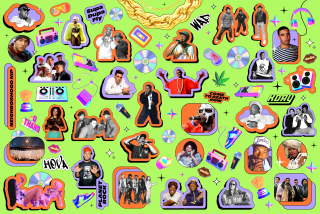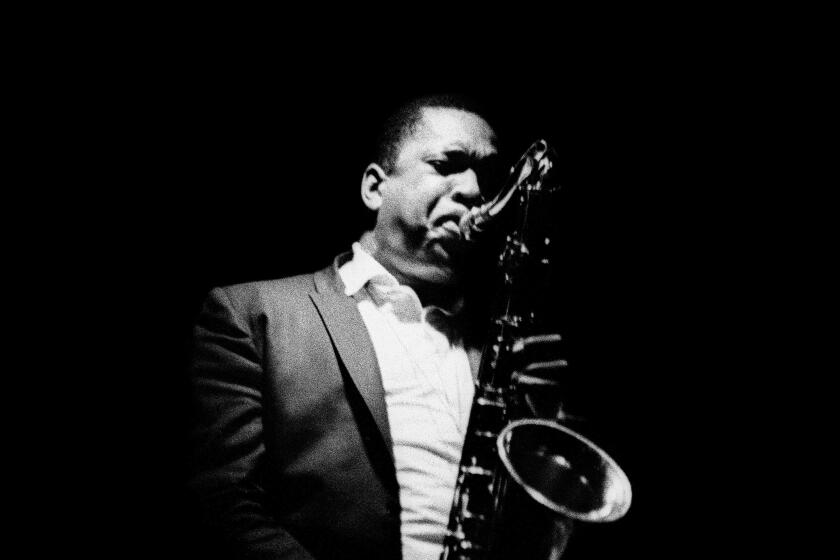Renegade Writer Taps the Power of Rap : William Burroughs reads from his works on an album to musical settings mainly by Disposable Heroes of Hiphoprisy.
- Share via
Rock groups from ‘60s English underground band Soft Machine to ‘70s hitmakers Steely Dan borrowed his imagery for their names. Industrial-rock giants Ministry dedicated a song to him in their last album, and P. J. Harvey has a picture of him on her date book.
Sonic Youth, John Cale and Nirvana’s Kurt Cobain have put music to his words. Everyone from poet-turned-rocker Patti Smith to U2’s Bono, who requested an audience with him during last year’s U.S. tour, acknowledges his influence. He even sings a song on the new Tom Waits album.
Now William Burroughs, the grand old man of dissident American letters, has made another foray into a pop-music world that bears his unmistakable imprint.
“Spare Ass Annie and Other Tales,” just released on the Island Red label, finds the author reading from his works, to musical settings provided mainly by Disposable Heroes of Hiphoprisy, one of the rap music’s keenest social observers and most inventive sonic manipulators.
Soldiers on the rampage in New York . . . a most traditional Christmas tale played out by a most untraditional cast . . . hallucinatory monstrosities and dangerously independent body parts . . . philosophical contemplations of God, man and animal. Through it all, Burroughs’ parched, acidic, Midwestern twang conveys his unique blend of horror and humor, while the Heroes’ funky hip-hop frameworks are incongruously perfect.
“The one thing I was surprised by,” says the Heroes’ Michael Franti, “is that with all his mystique of darkness and cynicism and stuff, he has a very compassionate side to what he does. That’s something you might not get out of just reading his books or seeing him in a public performance.”
Burroughs, 79, had a similar observation during a recent phone interview from his home in Lawrence, Kan.
“Many people have told me they couldn’t really get into my writing until they heard it from my readings,” said Burroughs. “See, all my reading is very carefully rehearsed. . . . If I ever stumble on a word I go back until I’ve gotten that straightened out. Sometimes I change it. If there’s something wrong with the way it reads there’s probably something wrong with the way it was written.”
Burroughs first gained public notoriety with the 1959 publication of his novel “Naked Lunch.” His graphic chronicles of the gay and drug-addict subcultures marked him as a renegade from the start, and over the years his explorations of the frontiers of consciousness and his uncompromising independence have made him an exemplar among cutting-edge movements. When he went on reading tours in the late ‘70s, he was embraced by a young generation of punks and art-rockers.
Why the connection?
Said Burroughs, “Experimental techniques, an emphasis on increased awareness, interest in any new developments--scientific or artistic. In other words, I think it’s an openness of vision.”
Says Franti, “I would say that it’s a certain disregard for mainstream sensibilities, which is kind of the theme of rock ‘n’ roll to begin with. To me, to see the stuff that he wrote 40 or 50 years ago, and to hear the rebelliousness in his voice then, it’s really amazing.”
More to Read
The biggest entertainment stories
Get our big stories about Hollywood, film, television, music, arts, culture and more right in your inbox as soon as they publish.
You may occasionally receive promotional content from the Los Angeles Times.










